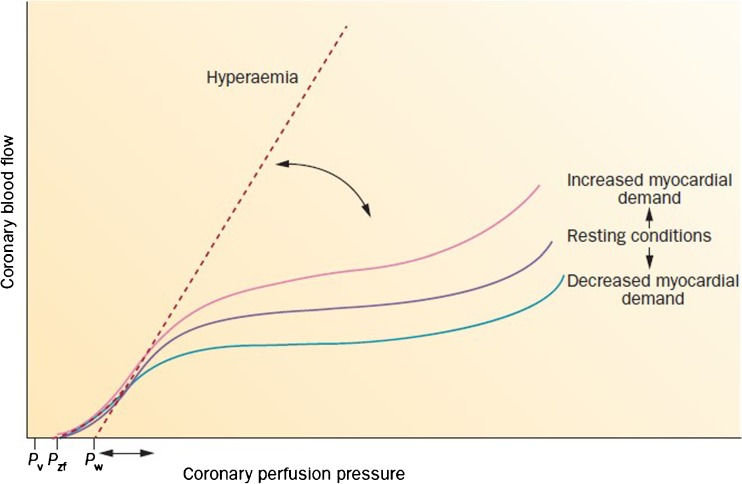Fig. 1.
Pressure and flow relationship in resting conditions, during exercise and during hyperemia. When myocardial demand increases, a parallel shift occurs in coronary blood flow, whereas coronary flow and pressure have an incremental-linear relationship under hyperemia conditions. Two concepts, the metabolic adaptation and the coronary autoregulation, are important determinants of coronary flow during increased myocardial demand. In the presence of small vessel disease or diminished left ventricular function, a parallel shift in coronary flow occurs (curved arrow). The coronay wedge pressure (Pw) is the pressure-flow gradient extrapolated from the pressure-flow relationship during maximal vasodilation, whereas the zero-flow intercept (Pzf) is marginally higher than the venous pressure (Pv). Reproduced from van de Hoef TP et al., Nature Reviews Cardiology. 2013;10(8):439–52(64), with permission [11]

